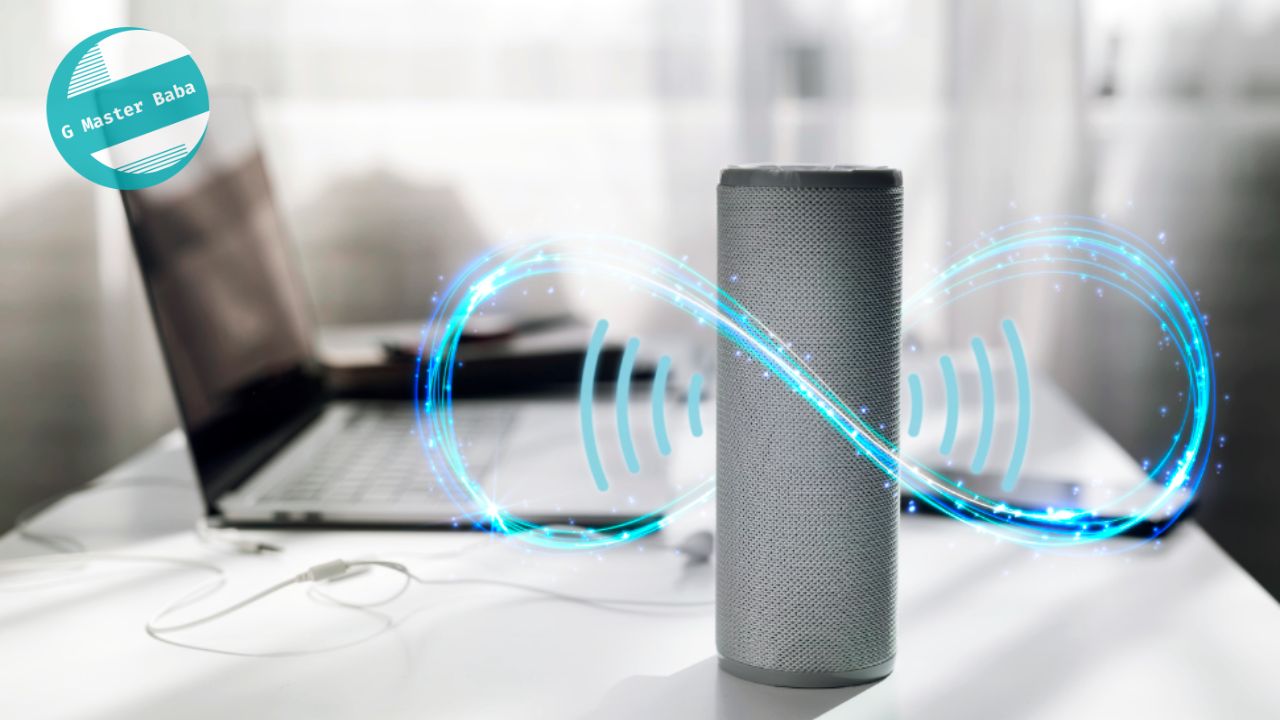As we navigate through 2025, technology is advancing rapidly, bringing exciting changes to how we live, work, and tackle global challenges. From smarter artificial intelligence to eco-friendly energy solutions, these innovations are set to transform industries and improve our daily lives. Below, we explore the top 10 technologies that seem likely to shape the future this year, based on insights from experts and recent reports.
Key Points
- Advanced AI is becoming smarter and more independent, helping with everything from creating content to making decisions, though ethical concerns like bias and privacy are sparking debates.
- Quantum Computing promises to solve complex problems, but it’s still early, and its full impact remains uncertain.
- Extended Reality (XR) is making virtual and augmented worlds more immersive, enhancing gaming, training, and shopping experiences.
- Sustainable Technologies are addressing climate change with greener energy and materials, though scaling them globally is a challenge.
- Biotechnology is improving healthcare with personalized treatments and wearable devices, but access and cost remain issues.
- Advanced Energy Solutions like nuclear power and new batteries are powering our tech-driven world more sustainably.
- Next-Generation Computing is making devices faster and smarter, with edge and neuromorphic computing leading the way.
- Autonomous Systems like self-driving cars and robots are improving efficiency, though safety and regulation are ongoing concerns.
- Digital Trust and Security technologies are protecting our data and fighting misinformation, but cyber threats are evolving.
- Space Technology is opening new possibilities for travel and connectivity, though it’s still a luxury for most.
Advanced AI: Smarter and More Responsible
Artificial intelligence is getting better at creating content, like writing or images, and even making decisions on its own. It’s being used in businesses, healthcare, and more, but there’s a push to make sure it’s used fairly and safely.
Quantum Computing: Solving Big Problems
Quantum computers can tackle challenges that regular computers can’t, like designing new medicines or cracking complex codes. While still in early stages, they’re expected to make a big difference soon.
Extended Reality: Virtual Worlds Come Alive
Imagine stepping into a virtual classroom or trying on clothes virtually. XR, which includes virtual and augmented reality, is making these experiences more real and useful for fun, work, and learning.
Sustainable Technologies: A Greener Future
From solar power to eco-friendly farming, these technologies are helping fight climate change. They aim to reduce pollution and make our planet healthier, though we need to make them affordable and widespread.
Biotechnology: Health Gets Personal
New medical treatments tailored to your body, wearable health trackers, and virtual doctor visits are making healthcare better. These advances could save lives, but ensuring everyone can access them is key.
Comprehensive Report: Technologies Shaping 2025 and Beyond
The year 2025 marks a pivotal moment in technological innovation, with advancements that are reshaping industries, addressing global challenges, and enhancing everyday life. Drawing from authoritative sources such as the World Economic Forum, Simplilearn, Forbes, Capgemini, and MIT Technology Review, this report details the top 10 technologies poised to define the future in 2025. Each technology is explored in depth, highlighting its significance, applications, and potential impact, with a focus on their interconnectedness and the challenges they face.
1. Advanced Artificial Intelligence (AI)
Overview: AI is at the heart of 2025’s technological revolution, with generative AI, agentic AI, small language models, and AI Trust, Risk, and Security Management (AI TRiSM) leading the way. Generative AI creates content like text, images, and music, while agentic AI enables autonomous decision-making for tasks like logistics or customer service. Small language models offer efficient, task-specific solutions, and AI TRiSM ensures ethical use by addressing bias, privacy, and security concerns. According to Capgemini, 70% of executives and 85% of investors rank AI agents among the top three impactful technologies for 2025.
Applications: AI is transforming industries, from generative search engines that summarize online content to virtual assistants and AI-driven cybersecurity. For example, generative AI search, as noted by MIT Technology Review, is simplifying how we find information, potentially disrupting traditional search engines. In healthcare, AI powers diagnostic tools, while in retail, it personalizes customer experiences.
Impact: AI’s versatility drives efficiency and innovation, but ethical concerns, such as bias in algorithms and job displacement, are prompting initiatives like UNESCO’s AI ethics guidelines. The debate over AI’s societal impact continues, with calls for transparent and fair deployment.
Source: Forbes, Simplilearn, MIT Technology Review
2. Quantum Computing
Overview: Quantum computing leverages quantum mechanics to process information at unprecedented speeds, solving problems intractable for classical computers. Innovations like Alphabet’s 105-qubit Willow chip demonstrate progress, with applications in cryptography, drug discovery, and optimization. Post-quantum cryptography is also emerging to secure data against future quantum threats.
Applications: Quantum computing is being explored for drug discovery (e.g., simulating molecular interactions), financial modeling, and logistics optimization. For instance, it can reduce the time needed to solve complex problems from years to minutes, as noted by Reuters.
Impact: While still in its early stages, quantum computing’s potential is immense, though challenges like scalability and error correction remain. Its development is driving investment in related fields like post-quantum cryptography to prepare for a quantum future.
Source: Simplilearn, Forbes, Reuters
3. Extended Reality (XR)
Overview: Extended Reality, encompassing Virtual Reality (VR), Augmented Reality (AR), and Mixed Reality (MR), is creating immersive digital experiences. VR 2.0 offers enhanced resolutions and motion tracking, while AR is advancing with smart glasses and mobile devices. Spatial computing, as highlighted by Forbes, integrates XR with AI and IoT, with the market projected to grow from $110 billion in 2023 to $1.7 trillion by 2033.
Applications: XR is used in gaming (e.g., immersive VR titles), training (e.g., medical simulations), retail (virtual try-ons), and remote collaboration. For example, Accenture’s Nth Floor uses XR for employee training, reducing costs and improving outcomes.
Impact: XR is redefining how we interact with digital environments, but adoption faces challenges like high costs and user comfort. Its integration with AI and IoT is creating new possibilities for smart cities and workplaces.
Source: Simplilearn, Forbes
4. Sustainable and Green Technologies
Overview: Addressing climate change is a global priority, and sustainable technologies are at the forefront. Green energy solutions like solar, wind, and advanced nuclear technologies, along with innovations like green nitrogen fixation (reducing 2% of global energy use in fertilizer production) and green steel (using hydrogen to cut emissions), are gaining traction. The World Economic Forum highlights these as critical for industrial sustainability.
Applications: Green nitrogen fixation supports sustainable agriculture, while green steel, as noted by MIT Technology Review, reduces emissions in industries like construction. Carbon capture and eco-friendly materials are also being adopted in manufacturing.
Impact: These technologies are essential for achieving net-zero emissions, but scaling them globally requires significant investment and policy support. Consumer awareness and regulations are driving adoption, though cost remains a barrier.
Source: World Economic Forum, Simplilearn, MIT Technology Review
5. Biotechnology and Health Innovations
Overview: Biotechnology is revolutionizing healthcare with personalized medicine, gene therapies, and wearable health monitors. Engineered living therapeutics, such as bacteria engineered to produce medicines, and long-acting HIV prevention drugs (offering 100% protection in trials) are breakthroughs. Telemedicine and wearable devices, like continuous glucose monitors, are shifting healthcare toward prevention.
Applications: Personalized medicine tailors treatments to genetic profiles, particularly in oncology. Wearable health monitors track vital signs, while telemedicine reduces the need for in-person visits. Stem-cell therapies are showing promise for epilepsy and type 1 diabetes, as noted by MIT Technology Review.
Impact: These innovations improve health outcomes and accessibility, but challenges like cost, equitable access, and regulatory approval persist. The potential to end diseases like AIDS highlights their transformative power.
Source: World Economic Forum, Simplilearn, MIT Technology Review
6. Advanced Energy Solutions
Overview: The growing energy demands of AI and digital infrastructure are driving innovations in energy solutions. Advanced nuclear technologies, including small modular reactors (SMRs), provide clean, reliable power. Structural battery composites, which store energy while serving as structural components, and osmotic power systems, which generate power from salinity differences, are emerging solutions.
Applications: Nuclear power supports AI data centers, as highlighted by Forbes, while structural batteries are used in electric vehicles and aerospace. Osmotic power is being explored for coastal energy generation.
Impact: These solutions are critical for sustainable energy, but challenges include high initial costs and regulatory hurdles. Their adoption is essential for powering the digital economy.
Source: World Economic Forum, Forbes
7. Next-Generation Computing
Overview: Computing is evolving with edge computing, neuromorphic computing, and hybrid systems. Edge computing processes data closer to its source, reducing latency for applications like IoT and autonomous vehicles. Neuromorphic computing mimics the human brain for energy-efficient processing, while post-quantum cryptography prepares for quantum threats.
Applications: Edge computing supports real-time analytics in smart cities, while neuromorphic computing enhances AI efficiency. Hybrid systems combine traditional, cloud, and quantum computing for complex tasks, as noted by Forbes.
Impact: These advancements enable faster, more efficient processing, but integrating diverse systems poses complexity challenges. They are critical for handling the data demands of 2025’s digital landscape.
Source: Simplilearn, Forbes
8. Autonomous and Robotic Systems
Overview: Autonomous systems, including robotaxis and collaborative robots (cobots), are transforming industries. Robotaxis are available in over a dozen cities, as noted by MIT Technology Review, while cobots enhance productivity in manufacturing and healthcare. Fast-learning robots, powered by generative AI, adapt quickly to new tasks.
Applications: Autonomous vehicles reduce accidents and emissions, while cobots assist in factories and hospitals. For example, Waymo’s robotaxis are expanding under regulatory oversight, and cobots are used in surgical procedures.
Impact: These systems improve efficiency and safety, but concerns about job displacement and safety regulations persist. Their integration with AI is driving rapid adoption.
Source: Simplilearn, MIT Technology Review
9. Digital Trust and Security
Overview: As digital transformation accelerates, ensuring trust and security is critical. Blockchain supports secure supply chains and digital identity, while AI-driven cybersecurity automates threat detection. Generative watermarking, as highlighted by the World Economic Forum, adds invisible tags to AI content to combat misinformation.
Applications: Blockchain is used for transparent voting systems and medical records, while AI cybersecurity protects against sophisticated attacks. Generative watermarking enhances trust in digital media, addressing concerns about deepfakes.
Impact: These technologies are vital for a secure digital world, but evolving cyber threats and regulatory challenges require ongoing innovation. Public trust in AI-generated content remains a debated issue.
Source: World Economic Forum, Simplilearn
10. Space Technology and Exploration
Overview: Space technology is becoming more accessible, with space tourism, satellite internet, and space-based manufacturing gaining traction. Companies like SpaceX and Blue Origin are leading commercial space flights, while satellite networks like Starlink improve global connectivity.
Applications: Space tourism offers adventure and research opportunities, while satellite internet connects remote areas. Space manufacturing explores producing materials and pharmaceuticals in microgravity.
Impact: Space technology is opening new frontiers, but high costs and environmental concerns about space debris are challenges. Its potential to enhance connectivity and innovation is significant.
Source: Simplilearn
Interconnected Ecosystem
These technologies are not isolated; they form an interconnected ecosystem. For example, AI relies on advanced computing and energy solutions, while sustainable technologies leverage IoT and AI for optimization. Autonomous systems benefit from edge computing and digital trust technologies, and space technology uses AI and advanced materials. This synergy amplifies their impact, creating a future where innovation drives progress across sectors.
Challenges and Considerations
While these technologies offer immense potential, they face challenges:
- Ethical Concerns: AI and synthetic media raise issues of bias, privacy, and misinformation, requiring robust governance.
- Scalability: Quantum computing and sustainable technologies need significant investment to scale globally.
- Accessibility: Biotechnology and space technology must become more affordable to benefit all populations.
- Regulation: Autonomous systems and digital security require clear regulations to ensure safety and trust.
Conclusion
The technologies shaping 2025 are not just tools; they are catalysts for addressing global challenges like climate change, healthcare access, and digital security. By understanding and embracing these trends, individuals, businesses, and policymakers can navigate the complexities of the digital age and build a more sustainable, connected, and innovative future.
| Technology | Key Applications | Challenges | Source |
|---|---|---|---|
| Advanced AI | Content creation, autonomous agents, cybersecurity | Ethical concerns, bias, job displacement | Forbes, Simplilearn |
| Quantum Computing | Drug discovery, cryptography, optimization | Scalability, error correction | Simplilearn, Reuters |
| Extended Reality (XR) | Gaming, training, retail, remote collaboration | Cost, user comfort | Simplilearn, Forbes |
| Sustainable Technologies | Green energy, sustainable agriculture, green steel | Scaling, cost | World Economic Forum, MIT Technology Review |
| Biotechnology & Health Innovations | Personalized medicine, telemedicine, wearables | Access, cost, regulation | World Economic Forum, MIT Technology Review |
| Advanced Energy Solutions | Nuclear power, structural batteries, osmotic power | Cost, regulatory hurdles | World Economic Forum, Forbes |
| Next-Generation Computing | Edge computing, neuromorphic computing | System integration complexity | Simplilearn, Forbes |
| Autonomous & Robotic Systems | Robotaxis, collaborative robots, fast-learning robots | Safety, regulation, job impact | Simplilearn, MIT Technology Review |
| Digital Trust & Security | Blockchain, AI cybersecurity, watermarking | Evolving threats, public trust | World Economic Forum, Simplilearn |
| Space Technology & Exploration | Space tourism, satellite internet, manufacturing | Cost, environmental concerns | Simplilearn |
Citations:










3 thoughts on “Top 10 Technologies Set to Shape the Future in 2025”
Perfect piece of work you have done, this website is really cool with wonderful information.
Thank you so much.
I was recommended this website by my cousin. I am not sure whether this post is written by him as no one else know such detailed about my problem. You are wonderful! Thanks!